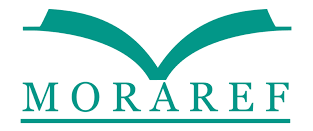THE ADAPTATION OF MYTHOLOGICAL CHARACTERS ON THE MECHANICS AND NARRATIVES OF THE HEROES IN MOBILE LEGENDS: BANG BANG
DOI:
https://doi.org/10.22515/crossover.v1i1.3805Abstract
Downloads
References
Bernal-Merino, M. A. (2006). On the translation of video games. The journal of specialised Translation. Retrived from http://www.jodtrans.org/issue06/srtbernal.php
Denzin, N. Amd Lincoln, Y. (2000) The Dicipline and Practice of Qualitative Research. In: Denzin, N.K, and Lincoln, Y.S., Eds., Handbook of Qualitative Research, Sage, Thousand Oaks.
Honko, Lauri. (1984). The Problem of Defining Myth. University of California Press.
Hutcheon, Linda. (2006). Theory of Adaptation. New York: Routledge.
Larrington, Carolyne (Trans.) (1999). The Poetic Edda. Oxford University Press.
Lindow, John. (2001). Norse Mythology: A Guide to The Gods, Heroes, Rituals, and Beliefs. Oxford University Press. New York.
Rafika Fidelia, Dendi Pratama. (2018). Busana Kerajaan Tokoh Gatotkaca Wayang Kulit Purwa Gaya Surakarta. Universitas Indraprasta PGRI: Jakarta. e-ISSN 2623-0305.
Santosa, Riyadi. (2014). Metode Penelitian Kualitatif Kebahasaan. Surakarta: UNS Pess.
Saptodewo, F. (2015). Kajian mitologi dan dekonstruksi Tokoh wayang tetuka. DEIKSIS.
Saptodewo, F. (2016). Perancangan bentuk tokoh wayang tetuka Saat balita. Jurnal Desain.
Simek, Rudolf. 1993. Dictionary of Northern Mythology. Translated by Angela Hall.
Downloads
Published
How to Cite
Issue
Section
Citation Check
License
Copyright (c) 2021 CrossOver : Journal of Adaptation Studies

This work is licensed under a Creative Commons Attribution-ShareAlike 4.0 International License.
Authors retain copyright and grant the journal right of first publication with the work simultaneously licensed under a Creative Commons Attribution 4.0 International License that allows others to share the work with an acknowledgment of the work's authorship and initial publication in this journal.

















